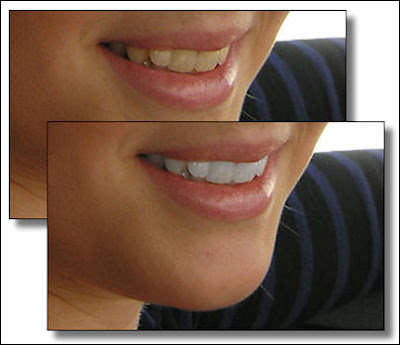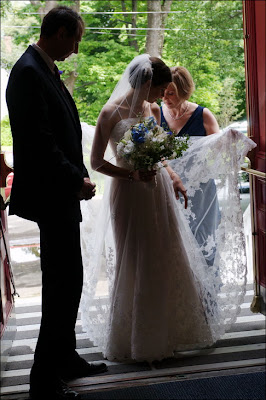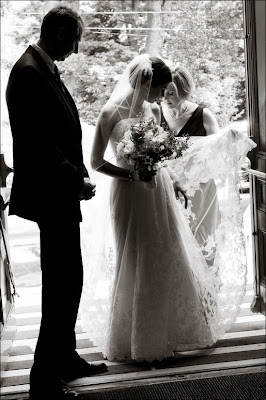Being a big fan of his products and his work you can imagine how excited I was to have Kevin take the time to do an interview with Weekly Photo Tips!
So, without further delay, ladies and gentlemen, Kevin Kubota...
 1. When/how did you get into photography?
1. When/how did you get into photography?
I started as a teen. My dad was a very talented photographer - always photographing our family in natural B&W images. Being the first born, I got all the photo attention. My younger sister is still scarred from an un-balanced picture archive in my favor. (not really :-) My dad had his own darkroom through college and photographed for the school paper. I took a photo class in high school and learned darkroom tech myself. He let me use his Nikkormat camera (yes, this was before digital) and that actually stayed with me and carried me through my first professional photo jobs - until it was stolen while I was on a location shoot. I was very broken up over that.
I finally started doing photography professionally after my first career in Fashion Design fizzled out and I was working at Nordstroms, selling shoes, and looking for something creative to do for a living. My roommate asked me to do some photos of her for her boyfriend, and so I put together a make-shift studio in my garage and gave it a shot. The images came out pretty good, and soon word-of-mouth brought me paying clients. I got in to weddings soon after I had my own wedding photographed, and I became friends with my photographer.
2. Who (or what) had the most influence on your development as a photographer?
Other than my father, who I know instilled my love of photography from an early age there were 3 people. My mom, because when my dad's camera was stolen she offered to buy me a "real" new camera. I was broke and could not afford it myself. If that hadn't happened, I may have taken on another job to make money and who knows if I would have returned to photography as a profession. Then, my personal wedding photographer, George Carranza. He's still a wedding photographer in So. California and has been one of my best friends. He encouraged me to get in to weddings and was always 100% open to sharing everything with me. I learned a lot about the business of photography from him and his art is awesome. He does amazing fashion and commercial work, as well as weddings & portraits. Then, there was a commercial photographer named Chuck Shahood in So. Cal. He taught at the local college where I took a few photo classes. He offered me an assistant job in his commercial studio and I grabbed at it. He was a brilliant photographer, crazy about the little details and quality control. He taught me lighting, got me in to computer imaging, and instilled a sense of "shoot for perfection" in me. He also loved to help and share with me, and I grateful for that.
3. What was your "big break"?
One day, sitting in my home office in the back of my garage in Bend, OR, I had a thought. I was going to finally break out of my comfortable box and submit images to a photo magazine. I used their online submission form and then put it out of my mind - expecting no reply at all. The next day, I got an email from them and they wanted to feature me on the cover of their next issue! I was blown away and couldn't really believe it. Soon after, they called and wanted to introduce me to some people at Nikon since I was doing wedding work with Nikon's newly released D1 digital camera. Nikon liked what I was doing and asked to feature my work in an upcoming advertorial. Soon they asked to include me on their "Legends Behind the Lens" website - the 2nd photographer to be featured after Joe Buissink - which I considered a great honor. Before I knew it, they had asked me to speak on their behalf at WPPI.
4. Why do you shoot Nikon?
Well, I definitely have a nostalgic connection to Nikon cameras from my father. But, over the years, I've been fortunate to be able to try most every camera on the market and run them through their paces. Part of the reason for my success is my constant search for "a better way". I'm never satisfied unless I feel I'm using the best of something - cameras, software, computers, workflow, business techniques, etc. I've always felt that Nikon cameras focused (pardon the pun) on intuitive, useful features and ergonomics more than any other manufacturer. I liken them to Mac in some ways. They may not come out with "upgrades" as often as competitors, but when they do, there are great innovative features. They were the first pro SLR with Auto ISO, a feature I absolutely love. The first with customizable function buttons, another feature I use all the time. Their flash systems have also been superior since the beginning of digital, and they still are. They just feel good in the hand as well. They feel like quality cameras, and I like that.
5. Which model do you shoot?
I use the D3 for my wedding and portraits and a D90 for travel. I love the light weight of the D90 and the video. I'll be trying a D300s soon, which might replace my D90. The D3 is perfect for weddings and portraits. It's ultra fast, focuses quick and accurate, and the high ISO quality is amazing. It's a perfect low-light camera. 12.1 MP is perfect too. I really don't want any larger files. It's complete overkill for what I do and just a waste of time and storage space.
6. What is your favorite lens?
Hmm. that's a tough one. I have 4 that I use on every wedding: 70-200 F2.8 VR, 14-24 f2.8, 50 f1.4g, and my Lensbaby Composer. I think the 50mm is probably the all-around most useful.
7. What is your favorite shooting (off camera) accessory?
That would be my 45" Photoflex diffusion disk. I use this all the time. It's great for diffusing sun, creating soft bounce light, or shooting an off-camera flash through it. It's my most versatile tool and the one thing I'd take to a deserted island - along with my iPhone, of course.
8. RAW or jpg (and why)?
RAW all the way. Better dynamic range, overall quality, protection from over/under-exposure, and they don't take any more noticeable time to store or process. I think of it like in the film days - would I rather have negatives as my originals, or the printed proofs? If I was dead-on with my exposure and white balance all the time and I never shot in extreme contrast situations, then JPG would probably be fine and would save me some DVD storage, but I'm not. I shoot quickly and prefer to focus on my subject and timing. I like having the flexibility to fine tune my exposure and white balance later and know that I'll have the best quality image.
9. PC or MAC (and why)?
LOL. Mac, of course. I'll try to be objective here and not just gush about the ergonomic, beautiful, sexy, cool factor of Macs. In reality, I've used both over the years and the only way I've ever seen PC's with an advantage is in game availability and cheap hardware. Neither of which are important to me. When I teach hands-on workshops, I generally have about half Mac and half PC users. By the end of the workshop, after working side-by-side for a week, most of the PC users have vowed to get a Mac. They see the difference in stability and ease of use. Sometimes it takes working side-by-side like this to really appreciate the difference. I see it at every workshop and in my office where we do tech support for our software. By far, we have more problems and confusion from the PC users - and usually it's just with their operating system or hardware, not even our software. We do our best to help them out.
10. When did you make the transition from film to digital?
About 10 years ago. I started with a Kodak digital SLR. Very expensive, slow, and crappy - compared even to a $49 digital point-n-shoot of today. I knew, though, that digital was the future, so I completely embraced it and was committed from day 1.
11. What do you miss about shooting film?
Spending $1 on every shot I took. I love throwing money away.
12. If you had to pick one - Lightroom or Photoshop, which one and why?
Hmm. Which child do you save from a sinking boat? I guess if I had to choose, I'd stick with Photoshop. My workflow would definitely be slower, but at least I'd still have the final image quality that I'm used to - and my clients are used to. I just can't completely emulate the beautiful effects I do in Photoshop with Lightroom, and that's an important part of my style and my unique selling point.
13. It’s also obvious that you enjoy teaching, why?
I enjoy teaching, yes I do. I think there are a few reasons. One, my parents were both teachers and that rubbed off on me. Two, I feel blessed to have had other photographers and business people share with me and teach me, and I know how valuable that was (and still is) to me. Three, I get really excited when I see the light bulbs going on in my students heads. I love to see them transform and become even better at what they do. Four, I believe that at the end of the day, nothing matters more than knowing what you do matters (I'm paraphrasing somebody).
14. Photographically speaking, what is your proudest moment?
Honestly, it was at WPPI this year when I was honored with the Monte Zucker Humanitarian Award. It was a complete surprise too! My friends and staff all knew about it and conspired to get me to go to the awards banquet. When Skip Cohen called my name, I sat there in disbelief for a while until my wife and friends said, "Go up there! That's you!" To me, it epitomized what I really believe photography can be about: changing the world and making it a better place. No other photography award would have been nearly as important to me.
15. Of all the places you have shot, what was your favorite?
A secret old church in the hills of Tuscany :-) Not only is it photographically unique and stunning, but it's spiritual essence is completely real, unpretentious, and engulfing. I could shoot there all day, and I have.
16. Where would you like to shoot but haven’t yet?
Thailand. I also would love to get some amazing underwater images. I scuba dive, but have not put together a good underwater photo kit yet.
17. If you had to shoot just one kind of photography (portrait, wedding, etc.) what would it be?
For many years, I would have said weddings. I have always loved them, and still do. At this point in my life and career though - after shooting weddings for almost 20 years, I feel drawn to fine art photography. I used to thrive on the adrenaline and energy of a wedding, but I'm starting to really appreciate the zen and quietness of fine art - sitting, observing, taking in an essence of a place or thing before photographing it. I guess that could be applied to weddings as well - just a different approach.
18. When did you start “Kubota Image Tools”, how did that happen?
I started Kubota Image Tools about 8 years ago. I had been teaching workshops for a little while and showing people how to write their own Photoshop actions. I wanted to teach them to "fish". After a while, I realized that most people also realized that there was more to writing a good action than just knowing the steps. They had to have experience with PS to know how to best use each feature, layer, filter, etc. to get beautiful looks. People starting asking me to just sell them my actions, which I reluctantly started to do. It was a big hit, so we continued to develop and evolve them. We realized these tools, which we used ourselves to enhance our photography business, were helping others grow their businesses too. This gave us motivation to continue to develop other products to empower photographers.
19. If you could take your family anywhere on vacation, where would it be?
Ah, there are so many wonderful places on our list, but we always love going to our home town, Kailua, on Oahu. We love renting a beach house and just hanging out. My kids absolutely love it there and my wife and I can't ever get enough. We go there almost every year and never grow tired of it. It's just the most relaxing place on earth for us, and that's a high priority these days :-)
20. If you weren’t a photographer, what would you be?
My business card says I'm the "Idea Guy". So, it must be true :-) I love coming up with ideas for products, inventions, etc. I have notebooks full of stuff - most of which are not even photo related. I'd probably love to startup new businesses, make them successful, then sell and move on to others. I love the creation process and I feel I've gathered a lot of great business experience over the years as well.
21. Lastly, what is the one thing you would want people to know about Kevin Kubota?
That I am grateful. I feel very fortunate to have such wonderful people in my life and business. I appreciate all the kind notes and emails and I read every single one, usually twice. I never want to feel like I'm taking things for granted and I always want to extend the same support to others that I've received myself. I want people to know that I am truly happy when I help them to be successful too. That's ultimately what keeps me motivated each day.










































